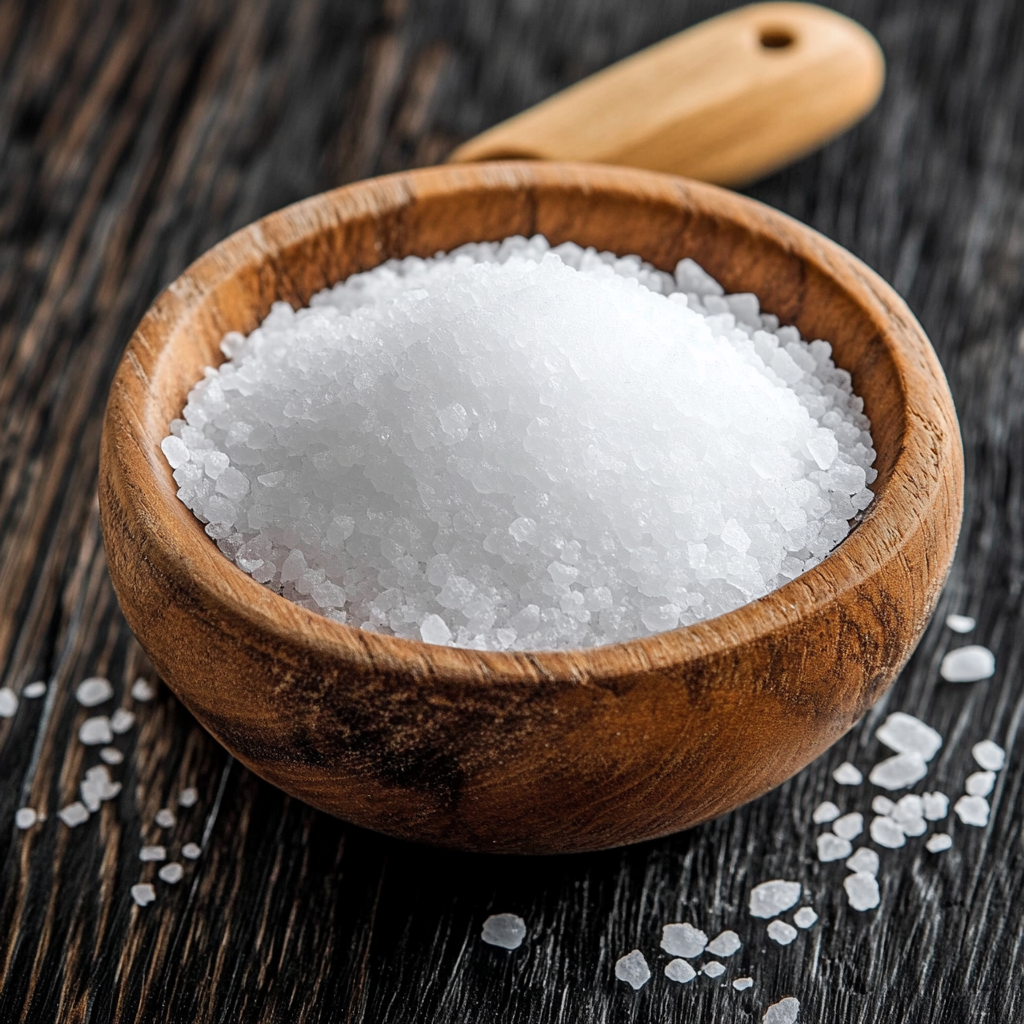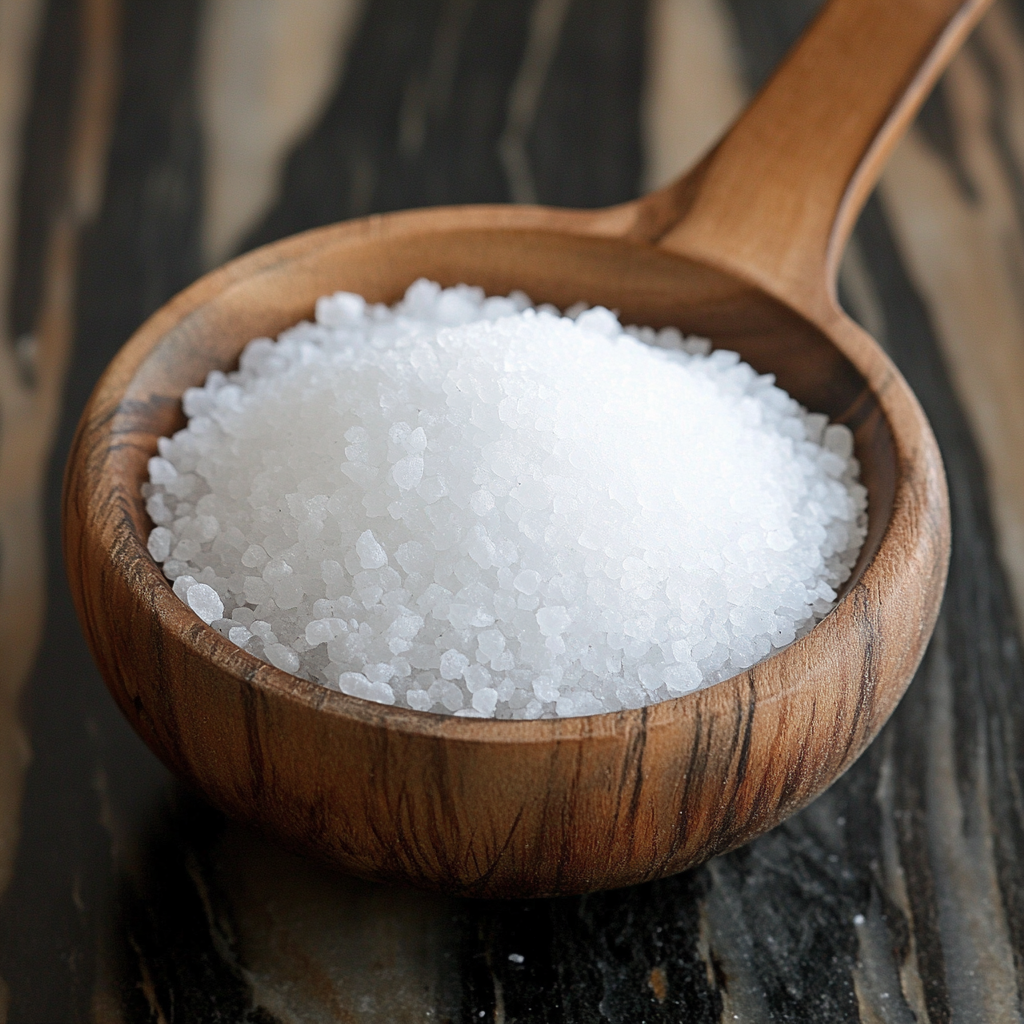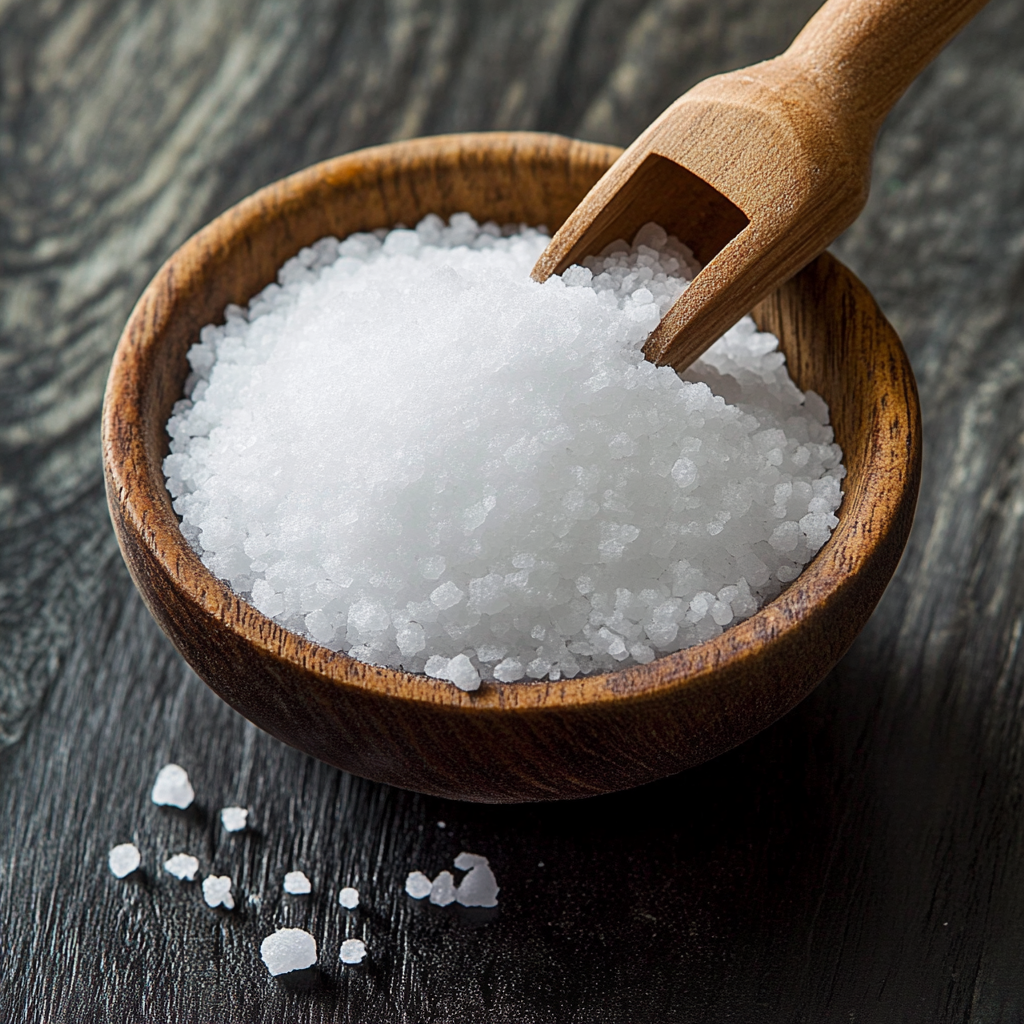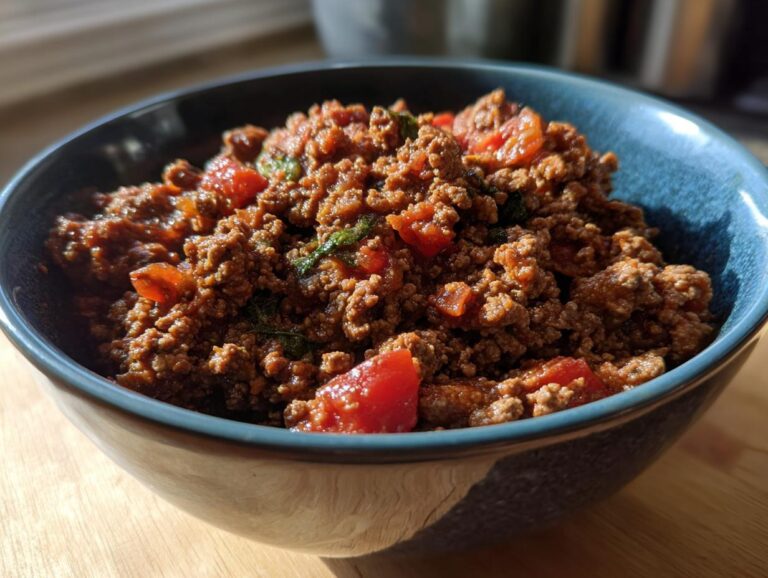When it comes to elevating the taste of any dish, the type of salt you use makes a big difference. Among all varieties, kosher salt stands out for its texture, purity, and versatility. In this guide, we’ll explore everything you need to know about kosher salt—from what makes it unique to why chefs love it and how it compares to other salts like pink Himalayan or regular table salt. We’ll also cover whether it’s a healthier choice, how it’s used in Jewish cuisine, and why it’s often the go-to for cooking pros.
Looking for inspiration? Try this flavorful beet salad recipe that highlights natural seasoning.
Table of Contents
1. What Is Kosher Salt?
What Defines Kosher Salt?
Kosher salt is a coarse, flaky salt commonly used in cooking, not to be confused with salt that’s simply labeled as “kosher” because of certification. It gets its name from the ancient Jewish practice of koshering meat—drawing out blood as required by Jewish dietary laws. Unlike iodized table salt, kosher salt is additive-free and has larger crystals, making it easier to control and distribute during cooking.
What truly sets kosher salt apart is its texture. The larger flakes dissolve slowly and cling well to food, giving chefs better precision during seasoning. Because it’s typically free of iodine, it doesn’t carry the slightly metallic aftertaste that iodized salts can sometimes leave.
How Kosher Salt Is Traditionally Made
Most kosher salt is made by evaporating seawater or mining it from salt deposits. It’s processed into larger, irregular flakes using either a rolling or compaction method, depending on the brand. Morton’s and Diamond Crystal, two of the most popular kosher salt brands, use different methods, leading to varied crystal sizes. This distinction affects how much salt fits into a teaspoon—so recipe adjustments are often necessary depending on which one you use.
Kosher salt isn’t refined to the same level as table salt, preserving more of its natural mineral structure. That’s one reason why many chefs find its flavor cleaner and more natural.
2. Kosher Salt vs. Table Salt: Key Differences
Texture, Size, and Purpose
At first glance, salt might seem like salt—but kosher salt and table salt differ in more ways than you’d think. The most obvious difference lies in the crystal size. Kosher salt has a coarse, flaky texture that makes it perfect for sprinkling evenly and sticking to surfaces like meat, veggies, or baked goods. Table salt, on the other hand, is fine-grained and often includes additives like iodine and anti-caking agents.
Here’s a quick breakdown:
| Type of Salt | Texture | Additives | Best Use |
|---|---|---|---|
| Kosher Salt | Coarse/flaky | No | Cooking, seasoning, curing meat |
| Table Salt | Fine | Yes | Baking, general seasoning |
| Sea Salt | Fine/Coarse | No | Finishing dishes, sauces |
Because of its size, kosher salt is easier to pinch and spread, making it ideal for dishes that require hands-on seasoning. Table salt tends to dissolve more quickly, which is helpful in baking, but makes it harder to control in savory dishes.
Why Chefs and Foodies Prefer Kosher Salt
Professional chefs almost universally prefer kosher salt—and for good reason. It gives better control over how much salt is added to a dish. The larger flakes allow for even distribution and prevent over-salting, which is common with finer salts. Chefs also like that kosher salt doesn’t contain iodine, which can slightly alter the flavor of delicate foods.
In fact, many culinary schools train students to use kosher salt exclusively to build seasoning skills. Its tactile texture teaches cooks to rely on taste, feel, and intuition rather than blindly measuring out salt.
Don’t miss our Natural Mounjaro Recipe where seasoning is everything—another great way kosher salt makes the difference.

3. The Role of Kosher Salt in Cooking
Culinary Benefits of Using Kosher Salt
Kosher salt plays a major role in the kitchen—not just as a seasoning, but as a tool for controlling flavor and moisture. Its coarse crystals make it easier to grab with your fingers, allowing precise pinches during cooking. That means you can season more intuitively and adjust along the way without overpowering your dish.
Because of its size and structure, kosher salt adheres well to meats, vegetables, and even baked goods. It’s ideal for:
- Seasoning steaks before grilling
- Brining poultry or fish
- Salting pasta water
- Finishing roasted vegetables
Compared to regular table salt, kosher salt doesn’t just sit on the surface—it bonds with the food, enhancing natural flavors rather than masking them.
You’ll also notice that kosher salt dissolves slower, allowing flavors to develop over time. This gives you more control over texture and taste, especially when slow-roasting or curing meats.
Check out this Garlic Butter Chicken and Potatoes Skillet to see how properly seasoned dishes come to life.
Flavor Absorption and Seasoning Control
Another reason kosher salt is beloved in kitchens is how it interacts with food at a chemical level. The crystal size helps it absorb slowly, penetrating meats and vegetables more effectively than table salt. This is critical when you’re dry brining or marinating, as it helps retain moisture and boost flavor from the inside out.
Here’s why that matters:
- Table salt may make meats too salty too quickly.
- Kosher salt provides a more even, deeper seasoning.
- Its lack of iodine means there’s no bitter aftertaste, keeping the flavors clean and natural.
When baking, kosher salt is also used to enhance sweetness, especially in chocolate desserts and caramels. It adds a delicate crunch and balances the richness.
4. Is Pink Himalayan Salt Kosher?
Understanding Kosher Certification in Himalayan Salts
While the name “kosher salt” describes the salt’s original function in koshering meat, it doesn’t automatically mean the salt is certified kosher by Jewish dietary standards. That also applies to pink Himalayan salt, a popular alternative known for its mineral-rich content and rosy hue.
Many pink Himalayan salts are kosher-certified, but not all. For a salt to be considered kosher certified, it must be supervised by a reliable rabbinical authority and processed in a facility that complies with kosher standards. It doesn’t matter if it’s mined from Pakistan or evaporated from the Dead Sea what matters is the handling.
To confirm whether pink Himalayan salt is kosher, check the label for a certification symbol like:
- OU (Orthodox Union)
- KOF-K
- OK Kosher
- Star-K
If you don’t see a mark, it may still be naturally “kosher-style” but isn’t certified for religious use.
How to Identify Kosher vs. Non-Kosher Salts
Here’s a quick checklist to identify whether your pink salt is truly kosher:
| Feature | Kosher Salt | Pink Himalayan Salt |
|---|---|---|
| Certified as Kosher? | Yes (most brands) | Only if labeled as such |
| Texture | Flaky, coarse | Fine or rock-like crystals |
| Source | Sea or rock salt | Himalayan mines |
| Iodine-Free | Yes | Yes |
| Common Use | Cooking, brining | Finishing, seasoning |
Always remember—“kosher salt” isn’t a religious designation unless explicitly stated. It refers more to the salt’s form and purpose than its certification.
Don’t miss our deep-dive on mindful eating and seasoning in this Morning Mounjaro Recipe for Weight Loss—a great way to use certified kosher ingredients!
5. Substituting Kosher Salt in Recipes
Can You Substitute Table Salt for Kosher Salt?

Absolutely but with caution. Kosher salt and table salt are not a 1:1 substitute because their crystal sizes and weights differ significantly. Since kosher salt is flakier and less dense, it takes more volume to match the saltiness of table salt. If you use the same amount of table salt in a recipe calling for kosher salt, the dish may come out overly salty.
Let’s break it down:
| Salt Type | Volume per Teaspoon | Weight (approx.) |
|---|---|---|
| Kosher Salt | Lighter, larger flakes | ~1.5g–2g |
| Table Salt | Fine, compact grains | ~6g |
So if a recipe calls for 1 teaspoon of kosher salt, you should only use about ½ teaspoon of table salt as a substitute.
To avoid mistakes, always refer to brand-specific conversions:
- Morton’s Kosher Salt is denser than Diamond Crystal Kosher Salt
- 1 tablespoon of Diamond Crystal ≈ 1½ teaspoons of Morton’s Kosher ≈ 1 teaspoon of table salt
This is especially important in baking, where precise salt balance impacts rise, texture, and flavor.
Conversion Chart for Salt Types in Recipes
Here’s a handy chart for quick reference when converting salt measurements in recipes:
| If Recipe Says… | Use This Instead |
|---|---|
| 1 tbsp Diamond Kosher Salt | 1¾ tsp Morton Kosher Salt |
| 1 tbsp Kosher Salt | 1½ tsp Table Salt |
| 1 tsp Table Salt | 2 tsp Diamond Kosher Salt |
| 1 tsp Table Salt | 1¾ tsp Morton Kosher Salt |
If you’re unsure, start with less and adjust to taste. It’s easier to add more salt than to fix an over-salted dish.
6. Why Is Kosher Salt Considered Healthier?
Fewer Additives and Anti-Caking Agents
One of the biggest benefits of kosher salt is its purity. Unlike table salt, which often contains additives like iodine and anti-caking agents, kosher salt is usually unrefined and additive-free. This simplicity is what makes it attractive to health-conscious cooks.
While iodine is important for thyroid function, many people today receive enough through other food sources, making added iodine unnecessary. The absence of additives in kosher salt also means a cleaner taste and fewer chemical interactions with your food.
Some people experience sensitivities to anti-caking agents, so choosing a pure kosher salt can minimize exposure to unwanted chemicals—especially helpful if you’re on a clean eating or elimination diet.
Sodium Content Comparison with Other Salts
Another reason kosher salt is considered “healthier” lies in how we measure and use it. Because it’s less dense than table salt, people tend to use less sodium by volume when seasoning with kosher salt.
For example:
| Salt Type | Sodium per Teaspoon |
|---|---|
| Table Salt | ~2,325 mg |
| Kosher Salt | ~1,120–1,800 mg |
| Sea Salt | ~2,000 mg |
So even if you season food by sight or feel, you may end up using less sodium overall with kosher salt. This makes it easier to stay within the daily recommended sodium limit of 2,300 mg without compromising flavor.
Discover great ideas like this in our Beet Salad with Feta where light seasoning makes all the difference.
7. What Makes Kosher Salt Special?
Cultural and Religious Significance

At its core, kosher salt owes its name and purpose to Jewish dietary laws—specifically, the process of koshering meat. According to traditional Jewish law, blood must be removed from meat before it can be eaten. Kosher salt, with its large, irregular flakes, is perfect for this task because it draws moisture (and blood) from the surface more effectively than finer salts.
But here’s the key detail: “kosher salt” doesn’t automatically mean it’s kosher-certified. The term refers more to the salt’s function in koshering meat than any rabbinical supervision. However, many brands of kosher salt also carry kosher certification, especially in Jewish households where adherence to religious standards is critical.
Over time, this religious tool evolved into a chef’s staple, thanks to its exceptional texture and flavor-enhancing properties. Even cooks who don’t keep kosher appreciate its history and purity.
Kosher Salt in Jewish Dietary Laws
In Jewish cuisine, kosher salt is used beyond meat preparation. It plays a role in:
- Preserving meats for Sabbath meals
- Drawing bitterness from vegetables like eggplant
- Salting fish in dishes like gefilte fish or pickled herring
Its cultural roots keep it relevant in households worldwide—not just in Jewish kitchens. And in professional culinary settings, it’s often the default salt for training chefs due to its reliability.
If you’re interested in ancient food traditions meeting modern nutrition, check out our Natural Mounjaro Recipe, which takes a natural approach to modern wellness.
8. Types and Brands of Kosher Salt
Top Kosher Salt Brands on the Market
Two brands dominate the kosher salt market: Morton and Diamond Crystal. While both are labeled “kosher,” their texture and density vary drastically—so much that many recipes specify which brand to use.
Here’s how they compare:
| Brand | Texture | Saltiness per Volume | Best Use |
|---|---|---|---|
| Diamond Crystal | Light, flaky | Milder | Pinch-and-season, dry brines |
| Morton | Denser, compact | Stronger | Baking, precise measurements |
Diamond Crystal Kosher Salt is a chef favorite. Its delicate flakes dissolve quickly and evenly. It’s also less salty by volume, giving you more control over flavor.
Morton Kosher Salt, while still coarse, is more compact and dense. It dissolves slower and tastes saltier, which makes it ideal for applications where moisture is present, like brines or pasta water.
Some specialty brands also offer kosher-certified sea salts or Himalayan kosher salts, which combine natural mineral content with the benefits of kosher processing.
Grain Textures: Fine vs. Coarse Kosher Salt
While kosher salt is typically coarse, some brands offer fine-grain versions for users who want the clean taste of kosher salt in a smaller flake. These are useful in baking, where measurements need to be precise.
Here’s a quick breakdown:
| Texture | Description | Use Cases |
|---|---|---|
| Coarse Flakes | Classic kosher texture | Brining, seasoning, dry rubs |
| Fine Flakes | Processed smaller kosher flakes | Baking, seasoning finished dishes |
Always check the recipe and brand, and if in doubt—adjust based on taste and crystal size. Over-salting happens fast when switching between types!
9. Storing and Using Kosher Salt
How to Properly Store Kosher Salt
Unlike other spices that quickly lose potency, kosher salt is stable—but that doesn’t mean it’s immune to moisture. To keep your kosher salt fresh and free-flowing, store it in a cool, dry place away from steam and sunlight. Use containers like:
- Airtight glass jars
- Ceramic salt cellars
- Wooden pinch bowls with lids
Avoid plastic bags or open containers, as exposure to humidity can cause clumping, especially with brands that don’t include anti-caking agents.
If your salt clumps, don’t toss it just break it up and bake it on low heat to dry.
Best Practices in Seasoning and Curing
To get the most out of your kosher salt, use it intentionally not like you’d use table salt. Here’s how:
- Season in layers: Add a pinch during prep, another while cooking, and a light touch at the end.
- Dry brine meats: Coat proteins with kosher salt and refrigerate for 12–24 hours. This draws out moisture and reabsorbs it, tenderizing the meat.
- Taste as you go: Because kosher salt flakes vary in saltiness between brands, the best approach is to season gradually.
Here’s a tip: don’t measure with spoons alone. Use your fingers to feel and distribute salt evenly—it’s what chefs do.
FAQ
What is the difference between salt and kosher salt?
The biggest differences are texture, grain size, and purpose. Kosher salt has larger, coarser flakes and no additives like iodine or anti-caking agents. It’s easier to handle and gives better control when seasoning.
Is pink Himalayan salt kosher?
Not always. Pink Himalayan salt can be kosher-certified, but only if it’s labeled with a recognized symbol like OU or Star-K. Always check the packaging for official certification.
Can I substitute regular salt for kosher salt?
Yes, but not 1:1. Table salt is denser, so you’ll need less of it. As a rule, use ½ the amount of table salt in place of kosher salt. Refer to our chart above for exact conversions.
Why is kosher salt healthier?
It contains no additives or iodine, and due to its flaky texture, you typically use less sodium per serving compared to table salt. This makes it a cleaner choice for those watching their intake.
Why is kosher salt so special?
Its large flakes, clean flavor, and historical use in koshering meat make kosher salt unique. It’s favored by chefs for precision seasoning and remains a staple in both home and professional kitchens.
Conclusion
Without a doubt, kosher salt deserves a place in every kitchen. From its religious roots to its culinary dominance, it’s more than just seasoning—it’s a tool for control, health, and flavor balance. Whether you’re roasting meats, enhancing veggies, or finishing baked goods, this versatile salt gives you the precision and purity that regular table salt can’t match.
For more recipes follow me on PINTEREST








